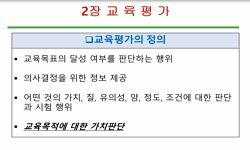This study aimed to develop and validate a tool for measuring supervisee self-reflection in the context of supervision. In supervision, counselors assess their overall counseling practices, enhance their knowledge and skills, and grow as professionals...
http://chineseinput.net/에서 pinyin(병음)방식으로 중국어를 변환할 수 있습니다.
변환된 중국어를 복사하여 사용하시면 됩니다.
- 中文 을 입력하시려면 zhongwen을 입력하시고 space를누르시면됩니다.
- 北京 을 입력하시려면 beijing을 입력하시고 space를 누르시면 됩니다.
수퍼바이지의 자기성찰 척도 개발 및 타당화 = Development and Validation of a Self-Reflection Scale for Supervisees
한글로보기https://www.riss.kr/link?id=T17204431
- 저자
-
발행사항
서울 : 광운대학교 일반대학원, 2025
-
학위논문사항
학위논문(박사) -- 광운대학교 일반대학원 , 산업심리학과 , 2025. 2
-
발행연도
2025
-
작성언어
한국어
- 주제어
-
발행국(도시)
서울
-
형태사항
xiv, 208p ; 26 cm
-
일반주기명
지도교수: 이상희
-
UCI식별코드
I804:11012-200000847137
- 소장기관
-
0
상세조회 -
0
다운로드
부가정보
다국어 초록 (Multilingual Abstract)
Keywords : supervisee, self-reflection, supervision, scale development, scale validation, CQR-M, supervision relationship
This study aimed to develop and validate a tool for measuring supervisee self-reflection in the context of supervision. In supervision, counselors assess their overall counseling practices, enhance their knowledge and skills, and grow as professionals. Supervisees utilize supervision as a platform to reflect on and evaluate their experiences, enabling their development as practitioners. Thus, fostering supervisees' capacity for self-reflection is a critical goal in counselor education. However, in Korea, there has been a lack of quantitative research addressing supervisee self-reflection due to the ambiguity of the concept and the absence of tools to measure it. Therefore, this study defined self-reflection specifically for supervisees and conducted the research accordingly. Self-reflection for supervisees was defined as "an attitude of actively and exploratively examining oneself through interactions with the supervisor when faced with uncomfortable, confusing, or dilemma situations during supervision." The findings of this study are as follows. First, Through a review of previous studies, four components of supervisee self-reflection were identified: "attitude of revealing oneself honestly," "attitude of exploring oneself as a professional," "attitude of accepting the supervisor's guidance," and "attitude of acknowledging one's limitations”. Second, Structured in-depth interviews with five supervision experts were conducted to explore practical aspects of supervisee self-reflection. From these interviews, five higher-order categories and 17 subcategories were identified. Four categories—self-disclosure, self-exploration, feedback acceptance, and acknowledgment of limitations—aligned with findings from prior research. Additionally, the category of "supervision relationship" emerged. Third, Data collected from 97 supervisees were analyzed using the CQR-M method. Five domains were identified: self-disclosure, self-exploration, defense reduction, acknowledgment of limitations, and trust in the supervisor. "Defense reduction" was specific to situations involving negative feedback, representing an aspect of feedback acceptance. The domain of "trust in the supervisor" highlighted the importance of the supervisory relationship. Based on these five domains, frequency analysis, expert review, content validity, and face validity assessments were conducted, resulting in a preliminary scale of 65 items derived from 464 statements. Fourth, To verify the appropriateness of the preliminary items and the factor structure, exploratory factor analysis (EFA) was conducted with data from 273 participants recruited with consideration of supervision relationships. Item analysis led to the removal of 14 items, and EFA identified 25 items across 5 factors. These factors were renamed to better represent their content: "open communication," "expanded self-understanding," "acceptance of negative feedback," "acknowledgment of professional and personal limitations” and "trust in the supervisor”. Fifth, Confirmatory factor analysis (CFA) was performed with data from a new sample of 300 participants to examine the validity and reliability of the scale. The analysis yielded significant model fit indices (χ²=552.31, df=260, p<.001, IFI=.91, TLI=.90, CFI=.90, RMSEA=.061). Convergent validity was confirmed through correlations with the Counselor Self-Reflection Scale, and criterion validity was supported through significant correlations with supervision working alliance and countertransference management. The lower correlation with counselor development indicated a distinction between counselor and supervisee development. The scale demonstrated satisfactory reliability, confirming its utility as a tool for measuring supervisees self-reflection. Implications of this study are as follows. First, This study identified specific attitudes necessary for supervisee self-reflection in supervision. Second, By defining supervisee self-reflection and distinguishing it from counselor self-reflection, a measurement tool tailored to supervisees was developed. Third, The inclusion of supervision relationships in the scale highlights the need to understand supervisee-supervisor interactions to foster self-reflection. Fourth, The detailed content of supervisee self-reflection provides a foundation for developing programs to enhance this capacity. Limitations and suggestions for future research are as follows. First, The "acceptance of negative feedback" subscale consisted entirely of reverse-scored items, suggesting the need to mix these items with other subscale items to create a balanced format. Second, As the scale relies on self-reports, participants' responses may be subject to distortion. Future research should compare and verify supervisee responses with those of supervisors. Third, Further studies should examine the relationships between supervisee self-reflection and various supervision-related variables to confirm the scale’s utility.
Keywords : supervisee, self-reflection, supervision, scale development, scale validation, CQR-M, supervision relationship
국문 초록 (Abstract)
핵심어 : 수퍼바이지, 자기성찰, 수퍼비전, 문항개발, 척도개발, 척도타당화, CQR-M, 수퍼비전 관계
본 연구는 수퍼바이지의 자기성찰을 측정할 수 있는 도구를 개발하고 타당화 하였다. 상담자는 수퍼비전에서 자신의 상담전반에 대해서 점검하고, 상담관련 지식과 능력을 함양시키면서 전...
본 연구는 수퍼바이지의 자기성찰을 측정할 수 있는 도구를 개발하고 타당화 하였다. 상담자는 수퍼비전에서 자신의 상담전반에 대해서 점검하고, 상담관련 지식과 능력을 함양시키면서 전문가로 성장한다. 수퍼바이지는 자신과 상담경 험을 점검하고 살펴보는 자기성찰의 장으로서 수퍼비전을 통해서 성장한다. 따 라서 수퍼비전에서 수퍼바이지의 성찰 능력 함양은 상담자 교육의 주요한 목표 이다. 하지만 국내에서 수퍼바이지의 자기성찰을 다룬 양적인 연구가 전무한데, 그 이유로는 자기성찰 개념의 모호성 및 수퍼바이지의 자기성찰을 측정하는 척 도가 부재하기 때문이다. 따라서 본 연구에서는‘수퍼바이지’를 대상으로 하 여 자기성찰을 정의하여 연구를 진행하였다. 수퍼바이지의 자기성찰이란 ‘수 퍼비전에서 당황스러운 상황, 혼란스러운 상황, 딜레마 상황 등이 발생하였을 때 수퍼바이저와의 상호작용을 통해 자신을 적극적이고 탐색적으로 점검하는 태도’로 정의하였다. 연구결과는 다음과 같다. 첫째, 선행연구 고찰을 통해 수 퍼바이지의 자기성찰 구성요인으로 ‘자신을 솔직하게 드러내는 태도’, ‘전 문가로서 자신을 알아가려는 태도’, ‘수퍼바이저의 지도를 받아들이는 태 도’, ‘한계를 인정하는 태도’의 4개 요인을 도출하였다. 둘째, 수퍼비전 전 문가 5명과 수퍼바이지의 자기성찰에 대한 실제적 측면을 확인하기 위해 구조 화된 심층 면담을 실시하였다. 전문가 인터뷰 분석 결과, 수퍼바이지의 자기성 찰에 대한 5개 상위범주, 17개의 하위범주가 도출되었다. 자기개방, 자기탐색, 피드백 수용, 한계인정의 4개 범주는 기존의 선행연구고찰과 동일한 범주로 나 타났다. 추가적으로‘수퍼비전 관계’범주가 도출되어, CQR-M 연구에서도 동 일하게 나타나는지 확인하고자 하였다. 셋째, 97명의 수퍼바이지를 대상으로 수 집된 자료를 CQR-M 방법으로 분석하였다. 분석결과, 수퍼바이지의 자기성찰에 는 자기개방, 자기탐색, 방어지양, 한계인정, 수퍼바이저 신뢰의 총 5개의 영역 이 도출되었다.‘방어지양’은 부정적인 질문과 피드백을 받게 되는 상황에 한 정하는 것으로‘피드백 수용’을 나타낸다. 또한 수퍼비전 관계인‘수퍼바이저 에 대한 신뢰’를 확인하였다. 이와 같은 5개 범주에 기초하여 빈도분석을 진 행한 뒤 감수, 내용타당도, 안면타당도 검증을 통해 464개의 진술문을 65개의 예비문항으로 구성하였다. 넷째, 예비문항의 적절성을 확인하고 요인구조를 확 인하고자 탐색적 요인분석을 실시하였다. 연구 참여자는 수퍼비전 관계를 고려 하여 모집하였으며, 총 273명의 자료를 수집하였다. 문항분석 결과 14개의 문항 을 삭제하여 51개의 문항으로 탐색적 요인분석을 실시하여, 5개 요인으로 25개 문항이 선정되었다. 요인분석 결과 앞선 연구결과와 5개 범주가 동일하게 도출 되어, 요인명이 문항을 대표적으로 나타낼 수 있도록 변경하였다:‘개방적 의사 소통’, ‘자기이해의 확장’, ‘부정적 피드백 수용’, ‘전문적·개인적 한계 인정’, ‘수퍼바이저와의 관계 신뢰’. 다섯째, 확인적 요인분석을 위해 새롭 게 수집한 연구 참여자 300명의 자료를 토대로 본 척도의 타당성과 신뢰성을 확인하였다. 분석결과, 유의미한 모형의 적합도 지수(χ²=552.31(df=260, p<.001), IFI=.91, TLI=.90, CFI=.90, RMSEA=.061)를 확인하였다. 또한 상담자 자 기성찰 척도와 수렴타당도를 확인하였으며, 수퍼비전 작업동맹, 역전이 관리와 의 유의미한 상관을 통해 준거타당도를 확인하였다. 상담자 발달과는 낮은 상 관을 나타내고 있어 상담자 발달과 수퍼바이지 발달의 차이를 확인하였다. 마 지막으로 척도의 양호한 신뢰도를 확인하여, 본 척도가 수퍼바이지의 자기성찰 을 측정하기 위한 적절한 도구임을 확인하였다. 본 연구의 의의는 다음과 같다. 첫째, 수퍼바이지가 수퍼비전에서 자기성찰을 하기 위해 필요한 태도를 구체적으로 확인하였다. 둘째, 수퍼바이지의 자기성찰 에 대한 정의를 내리고, 상담자의 자기성찰과 차이를 확인하여 수퍼바이지의 자기성찰을 측정할 수 있는 도구를 개발하였다. 셋째, 수퍼바이지의 자기성찰을 측정하기 위해 수퍼비전 관계를 고려하여 척도를 개발하여, 자기성찰을 위해 수퍼바이지와 수퍼바이저의 상호작용을 이해할 필요가 있다는 것을 확인하였 다. 넷째, 수퍼바이지의 자기성찰의 구체적인 내용을 통해 자기성찰을 높일 수 있는 프로그램 개발의 기초를 마련하였다. 본 연구의 제한점 및 후속 연구를 위한 제언은 다음과 같다. 첫째, 본 연구에서 개발한 척도의 하위요인 중 ‘부 정적 피드백 수용’의 5문항이 전부 역문항으로 구성되었으므로, ‘부정적 피 드백 수용’의 문항을 다른 요인의 문항과 적절하게 혼합하여 혼합 문항의 형 태로 구성하여 사용하는 것을 제안한다. 둘째, 본 연구에서 개발한 척도는 자기 보고식 척도로 참여자가 응답을 왜곡할 수 있으므로, 수퍼바이저와 동시에 측 정하여 비교하고 검증하는 과정이 필요할 것이다. 셋째, 본 연구에서 개발한 수 퍼바이지의 자기성찰과 수퍼비전 관련 다양한 변인들과의 관계 검증을 통하여 척도의 유용성에 대하여 확인할 필요가 있을 것이다.
핵심어 : 수퍼바이지, 자기성찰, 수퍼비전, 문항개발, 척도개발, 척도타당화, CQR-M, 수퍼비전 관계
목차 (Table of Contents)
- Ⅰ. 서론 1
- 1. 연구의 필요성 및 목적 1
- 2. 연구문제 7
- Ⅱ. 이론적 배경 10
- 1. 수퍼바이지 10
- Ⅰ. 서론 1
- 1. 연구의 필요성 및 목적 1
- 2. 연구문제 7
- Ⅱ. 이론적 배경 10
- 1. 수퍼바이지 10
- 1) 상담 수퍼비전의 개념 10
- 2) 상담 수퍼비전의 목적 12
- 3) 수퍼바이지 개념 14
- 4) 수퍼바이지의 수퍼비전 경험 16
- 5) 수퍼바이지 발달 21
- 2. 자기성찰 29
- 1) 자기성찰의 정의 29
- 2) 자기성찰의 과정 30
- 3) 자기성찰의 수준 35
- 4) 자기성찰의 속성 38
- 5) 자기성찰 관련 척도 43
- 6) 자기성찰과 유사한 개념 및 선행연구 49
- 3. 수퍼바이지의 자기성찰 61
- 1) 상담자의 자기성찰과 수퍼바이지의 자기성찰 차이 67
- 2) 수퍼바이지의 자기성찰의 구성요인 68
- Ⅲ. 연구방법 및 연구결과 71
- 1. 연구1: 수퍼바이지의 자기성찰 척도 문항 개발 73
- 1) 선행연구 고찰 75
- 2) 수퍼비전 전문가 심층 인터뷰 79
- 3) 개방형 설문조사 86
- 4) 연구결과 및 예비문항 개발 104
- 2. 연구2: 수퍼바이지의 자기성찰 척도 개발 111
- 1) 연구 참여자 및 자료수집 절차 111
- 2) 측정도구 114
- 3) 자료분석 114
- 4) 연구결과 116
- 3. 연구3: 수퍼바이지의 자기성찰 척도 타당화 128
- 1) 연구 참여자 및 자료수집 절차 128
- 2) 측정도구 133
- 3) 자료분석 137
- 4) 연구결과 138
- Ⅳ. 논의 148
- 1. 연구결과 요약 148
- 2. 연구의 의의 157
- 3. 연구의 제한점 및 추후 과제 166
- 참고문헌 164
- 부록 191










